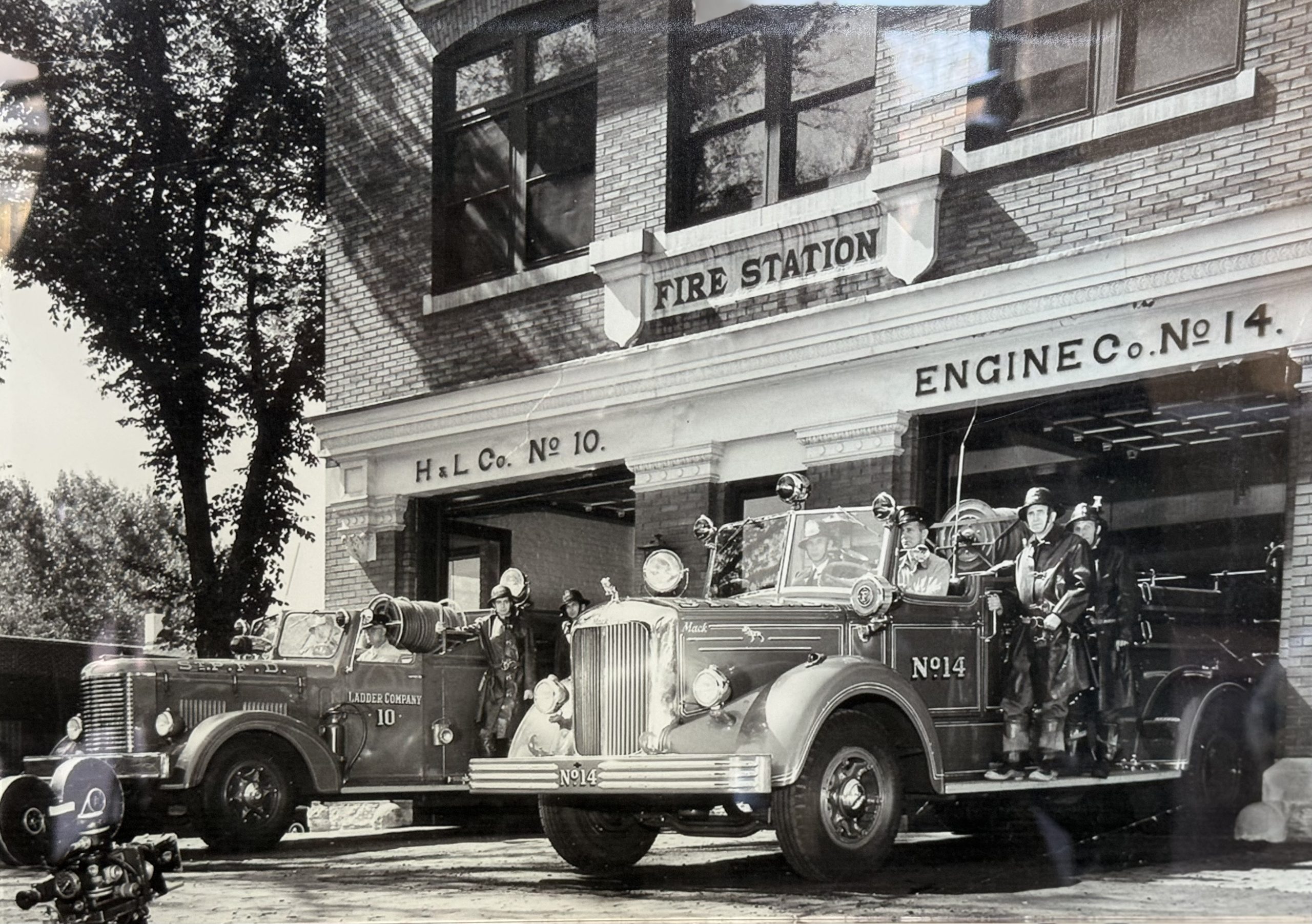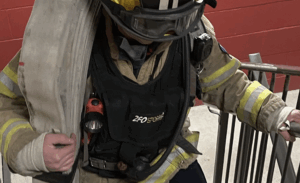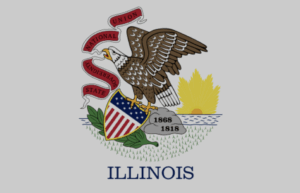This journey through the History of the US Fire Service underscores the resilience and innovation of the firefighting profession, where ancient instincts to control fire have evolved into a modern, multifaceted force committed to saving lives, protecting property, and making the world a safer place for all.
Firefighting is a testament to the enduring human spirit and the evolution of our society. Fire has been a mysterious and mesmerizing force for millennia, both a friend and a formidable foe. From ancient to modern times, our ancestors’ attempts to harness and control fire led to the birth and growth of firefighting as we know it today.
Early American Firefighting

In the twilight of the seventeenth century and the dawn of the eighteenth, the British Colonies in America faced a growing and formidable challenge: how to safeguard their budding communities from the menacing specter of fire.
The story of firefighting in colonial America is a narrative of courage, community, and civic duty. It is a tale of early heroes who confronted the ravaging power of fire with sheer determination and resourcefulness, laying the foundation for the firefighting profession we know today.
Volunteer Firefighting
Philadelphia’s own Benjamin Franklin, a figure revered in American history, is often acknowledged as the father of the fire service. In the mid-1730s, Franklin played a pivotal role in establishing the first volunteer fire department.
However, he was not alone in this endeavor. In New York and Boston, volunteer fire departments also took shape during the same period. These early establishments marked the birth of organized firefighting efforts in colonial America.
Revolutionary Leaders as Firefighters
Before and after the American Revolution, the cause of firefighting was championed by some of the most iconic political leaders of the era. Figures like John Hancock, Samuel Adams, and Paul Revere stepped into leadership roles within the volunteer fire service, becoming beacons of inspiration for their respective cities.
At that time, the volunteer fire service was the only essential community service entirely managed by volunteers. These leaders, renowned for their roles in shaping the nation’s destiny, also undertook the solemn responsibility of protecting their communities from the relentless threat of fire.
Community-Led Firefighting
In a time when professional fire departments were yet to be conceived, volunteer firefighters embodied a community’s collective commitment to safety. These early volunteers banded together to form the first fire brigades, often relying on rudimentary tools and their unwavering resolve to battle fires.
The Legacy of Valor
In the History of the US Fire Service, these first firefighters’ legacy is a testament to the strength of the community and the power of civic duty. Their willingness to stand against the destructive force of fire, armed with little more than courage and a shared sense of responsibility, laid the cornerstone for the firefighting profession.
With its professional personnel and state-of-the-art equipment, today’s modern fire service traces back to these protection pioneers. Their spirit lives on in the dedication and heroism of firefighters who continue to safeguard lives and property from the unrelenting challenge of fire.
The Age of Steam and the Birth of Full-Time Firefighters
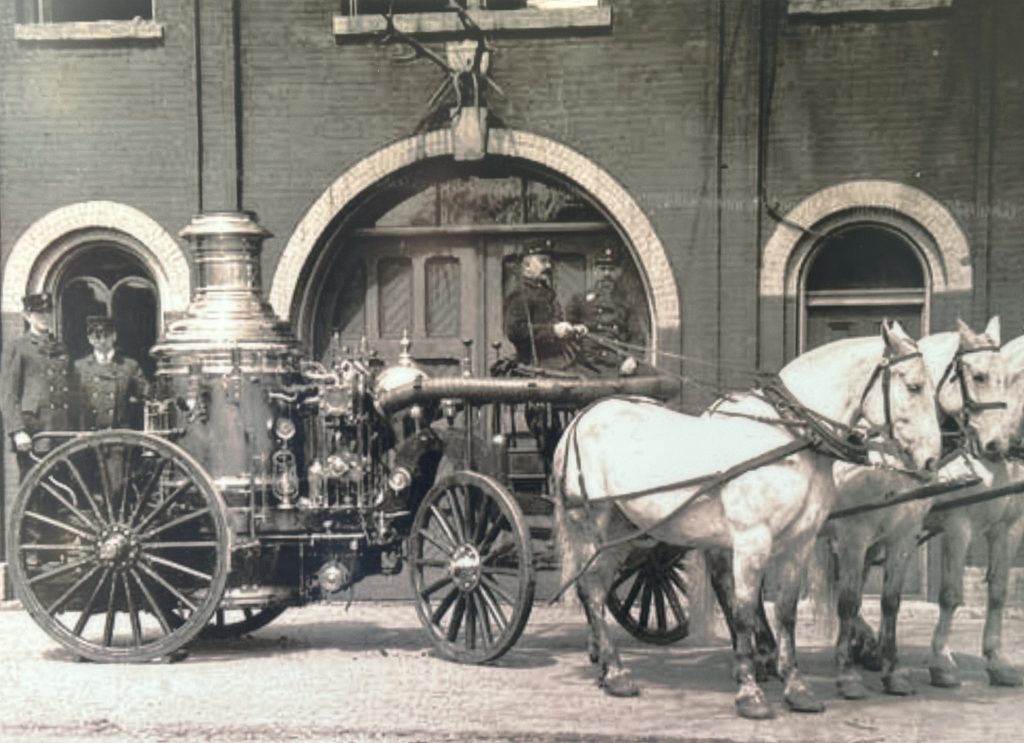
The Steam era was an unparalleled chapter in the History of the US Fire Service. The steam era in the U.S. Fire Service began in Cincinnati in 1853 when the first steam-powered fire engine was introduced.
In these times, people would gather in awe as heroic horse-drawn machines powered by the marvel of steam thundered through the streets, battling the relentless adversary that was fire.
Loyal Companions: The Fire Dog
Accompanying these remarkable steam-powered engines were loyal companions – fire dogs. These valiant canines ran alongside the horses and guarded them at the fire scene.

Most of these fire dogs were Dalmatians, known for their unique ability to forge a solid and reassuring relationship with horses. Their presence comforted the horses and contributed to the efficiency of firefighting efforts.
The Rise of Full-Time Firefighters
The advent of advanced fire pumpers and aerial apparatus marked a transformative period in the History of the US Fire Service. These technological marvels, powered by steam and gasoline engines, revolutionized the fire service.
As urban areas expanded and the demand for enhanced firefighting capabilities grew, the need for professionally trained firefighters became paramount.
The first paid fire departments emerged, introducing the concept of full-time firefighters. While many volunteer fire departments in America’s larger cities started to disband in favor of these professional forces, volunteer fire departments in rural America still stand as stalwart defenders of property and community safety.
Pioneers of Full-Time Service
The city of Cincinnati made history by establishing one of the first full-time fire departments in 1853, a bold move that would set the stage for the future of firefighting.
Providence, Rhode Island, soon followed in 1854, and Albany, New York, joined the ranks of full-time fire departments in 1867.
These pioneering cities recognized the invaluable contributions of dedicated, professional firefighters, shaping the trajectory of the fire service as we know it today.
The steam era not only introduced dramatic advancements in firefighting technology but also heralded the rise of full-time firefighters, whose unwavering commitment and expertise continue to protect lives and property, ensuring the safety of communities nationwide.
The 20th Century U.S. Fire Service: Evolution and Expansion
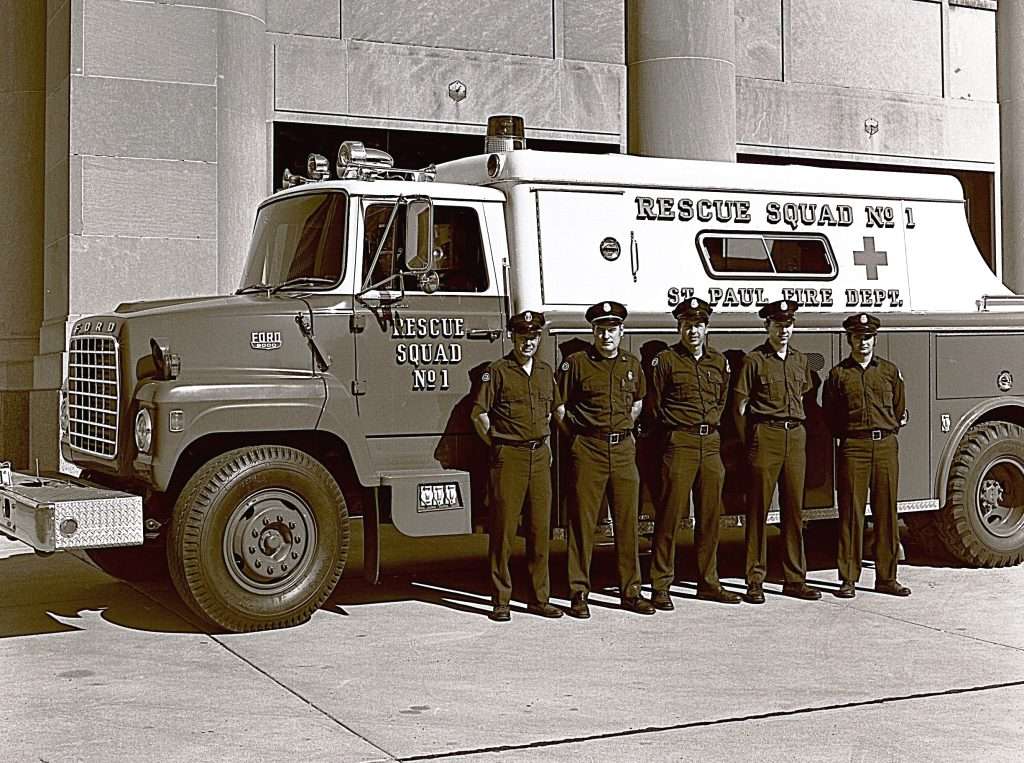
In the history of the US Fire Service, the 20th century witnessed a profound transformation in the role and responsibilities of American firefighters.
While structural firefighting remained the central mission of fire departments, this era diversified duties, expanding their involvement in lifesaving activities.
The Rise of Lifesaving Services
In this century, American fire departments recognized the need to expand their services beyond extinguishing fires. Introducing Emergency Medical Services (EMS) training became a pivotal step for the fire service.
Today, nearly every fire department across the United States is equipped with the skills and resources to provide either Advanced Life Support (ALS) or Basic Life Support (BLS) services to their communities. Once primarily associated with firefighting, firefighters have become the first responders in medical emergencies, rendering vital aid to those in distress.
Paramedicine: A Game-Changer
A significant milestone in the 20th century was the debut of paramedicine in the late 1960s and early 1970s. This marked a turning point in emergency medical services, introducing specialized treatment and vehicles like ambulances and medic rigs.
Today, it’s almost unthinkable to find a career fire department and many volunteer fire departments without an EMS component. EMS emergencies have become a dominant aspect of a department’s annual response activities, comprising a substantial portion of their call volume.
Specialized Resources for New Challenges
Recognizing the evolving challenges of the 20th century, fire departments diversified further by adding specialized resources to their repertoire. They equipped themselves to respond to various incidents, including hazardous materials emergencies, wildland firefighting, and advanced technical rescues.
These advanced rescue disciplines encompass high-angle rope rescues, confined space rescues, trench rescues, and structural collapse incidents. As urbanization progressed and new technologies emerged, firefighters adapted to address increasingly complex and diverse emergencies.
The 20th century was a profound evolution and expansion period for the U.S. Fire Service. From its core mission of structural firefighting, it embraced new roles in lifesaving, becoming the frontline provider of emergency medical services.
It also equipped itself to handle various emergencies, from hazardous materials incidents to advanced technical rescues, exemplifying the fire service’s adaptability and unwavering commitment to protecting and serving their communities.
Today's Fire Service is a Profession Evolved
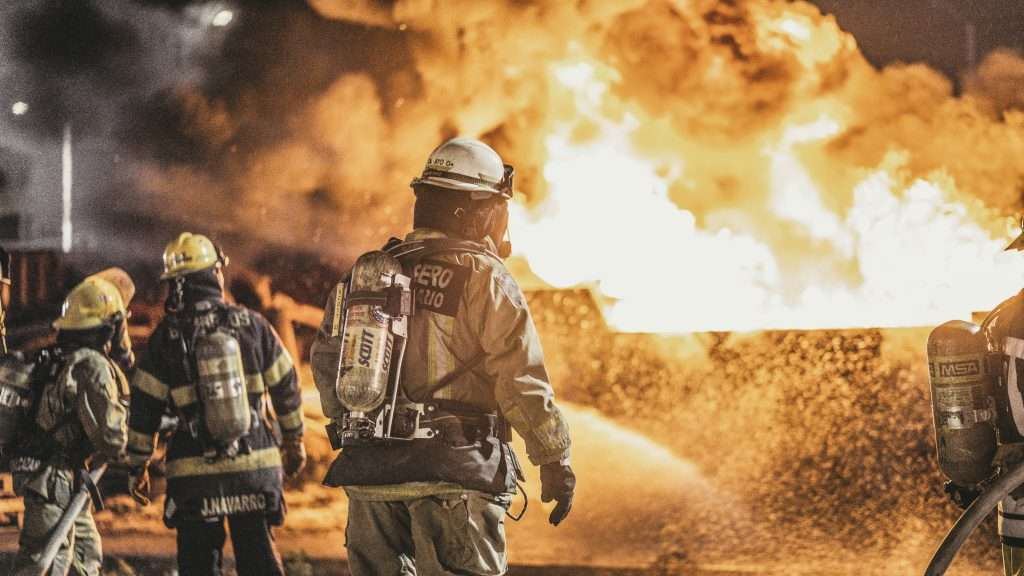
The landscape of firefighting in the present day has evolved into a profession that demands valor and a comprehensive skill set. While the historical emphasis on fire service training and education still holds in larger U.S. cities, becoming a firefighter has transformed across medium-sized fire departments.
The Changing Educational Landscape
Traditionally, the fire academy within a department provided the essential training and education required to shape competent firefighters. However, this approach has undergone substantial changes.
Many medium-sized fire departments now mandate that firefighter candidates complete a certificate program at a community college. This comprehensive program often encompasses a range of certifications, including Emergency Medical Technician (EMT) or Paramedic, Firefighter 1 and 2, and Hazardous Materials Awareness and Operations.
The objective is to equip candidates with a diverse skill set that enables them to respond effectively to various emergency scenarios.
The New Standard
Advanced training has become the new standard for larger fire departments and a prerequisite for applicants at medium and smaller fire departments.
The emphasis on comprehensive certifications reflects the ever-evolving nature of firefighting, where firefighters are expected to be versatile first responders capable of handling medical emergencies, hazardous materials incidents, and structural fires with equal proficiency.
The Journey to Becoming a Firefighter
Regardless of the path taken, every aspiring firefighter must meet the specific requirements of the fire department they seek to join.
An essential component of the firefighter candidate journey is the exam process, which assesses the candidate’s knowledge, physical fitness, and readiness for the role.
Achieving a high score in this examination is a critical step towards securing a position in the fire service.
Once successfully hired, the new firefighter embarks on continuous learning. Fire departments invest in their recruits, sending them through a rigorous academy to receive specialized training and certification tailored to the specific jurisdiction.
This intensive training equips them with the skills and knowledge necessary to respond effectively to their service area’s unique challenges and demands.
In today’s fire service, the profession has transcended its historical role. It now requires not only bravery but also a diverse skill set.
The emphasis on advanced education and training reflects the evolving landscape of firefighting, where firefighters are the first line of response in an array of emergencies.
The path to becoming a firefighter has become more comprehensive, ensuring that these modern heroes are prepared to safeguard their communities effectively.
Becoming a Firefighter in the 21st Century
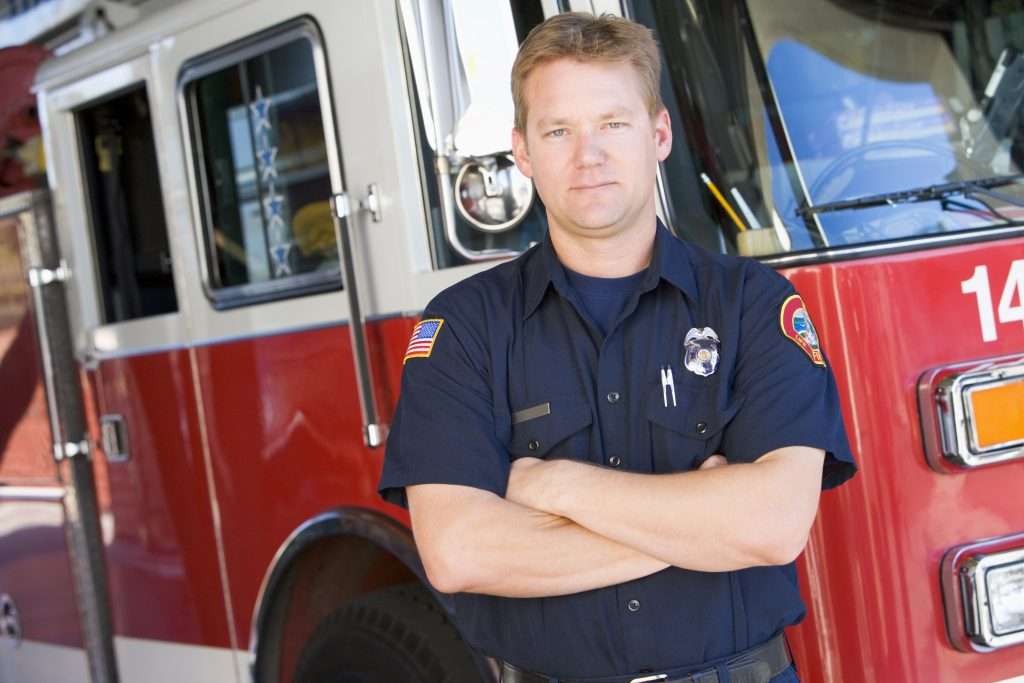
In the 21st century, becoming a firefighter remains rooted in tradition and practicality. While the requirements may sound familiar – being 18 years old, possessing a driver’s license, and maintaining a clean criminal record – there’s one pivotal element that has, and continues to be, the gatekeeper to this honorable profession: the firefighter exam.
This examination, both revered and challenging, is the key that opens the door to a firefighter’s world. It’s a test of knowledge, physical fitness, problem-solving skills, and mental preparedness. In many ways, the journey to become a firefighter today mirrors that of the 20th century. The essence of this profession, rooted in courage, resilience, and commitment, remains unaltered.
The Significance of the Firefighter Exam
The firefighter hiring process is not just a formality; it’s a crucial selection process that assesses the qualifications and capabilities of aspiring firefighters.
It’s a comprehensive evaluation delves into multiple aspects, including knowledge, physical fitness, problem-solving skills, and mental preparedness. Successfully navigating this process is essential for those aiming to serve as first responders in their communities.
Knowledge is Key
The firefighter written exam tests an applicant’s knowledge across various domains relevant to the firefighting profession. This includes fire science, emergency medical services (EMS), hazardous materials handling, and more.
Aspiring firefighters must showcase a solid understanding of these subjects, as it forms the foundation for effective decision-making in high-stress emergencies.
Physical Fitness
Physical fitness is a non-negotiable aspect of being a firefighter. The exam typically includes a firefighter physical ability test to ensure that candidates possess the strength and endurance required to perform the physically demanding firefighting tasks.
This component often involves ladder climbs, hose drags, and stair climbs, simulating the real-life challenges faced in the field.
Problem-solving and Critical Thinking
Firefighters often face complex, rapidly evolving emergencies where quick thinking and practical problem-solving are vital.
The firefighter exam evaluates candidates’ ability to analyze scenarios, make pressure-based decisions, and adapt to changing conditions. These skills are essential for ensuring the publics and fellow firefighters’ safety.
Mental Preparedness
The firefighter exam also tests mental resilience. Maintaining composure, managing stress, and working cohesively with a team is fundamental in the fire service.
Applicants must demonstrate their readiness to confront high-stress situations, making split-second decisions that impact lives and property.
Preparation is the Key
Mastering the firefighter exam process demands diligent preparation. Prospective firefighters often enroll in preparatory courses, study relevant materials, and participate in practice exams.
These preparations help candidates build confidence, refine their knowledge and skills, and become familiar with the format and content of the actual exam.
The Road to Becoming a Hero
While the firefighter exam process is rigorous and demanding, it is the crucial step that leads to fulfilling the dream of becoming a firefighter.
Those who master this process prove their commitment to the profession and dedication to serving and protecting their communities.
In conclusion, becoming a firefighter is not just a career choice; it’s a calling, a commitment to selfless service and bravery. The firefighter exam process is the bridge that connects aspiring heroes with the opportunity to make a real difference in the world. Mastering the firefighter exam process is not just a personal achievement; it’s the first step in a lifelong journey of heroism and selfless service, where every day brings the potential to be someone’s savior.
Learn How You Can Become A Firefighter
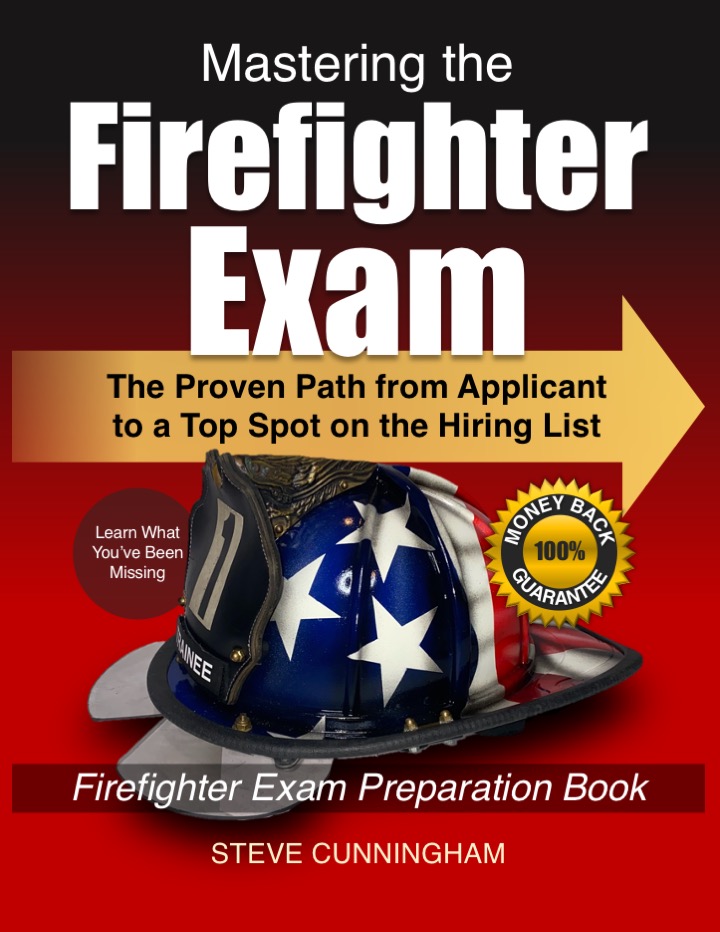
Mastering the Firefighter Exam is a complete guide on how to pass the firefighter exam with a top score. It simplifies the complicated hiring practices of big city fire departments and reveals insider information most candidates don’t know about.
If You Would Like To Know How To Get A Head Of Your Competition, This Book Is For You.

